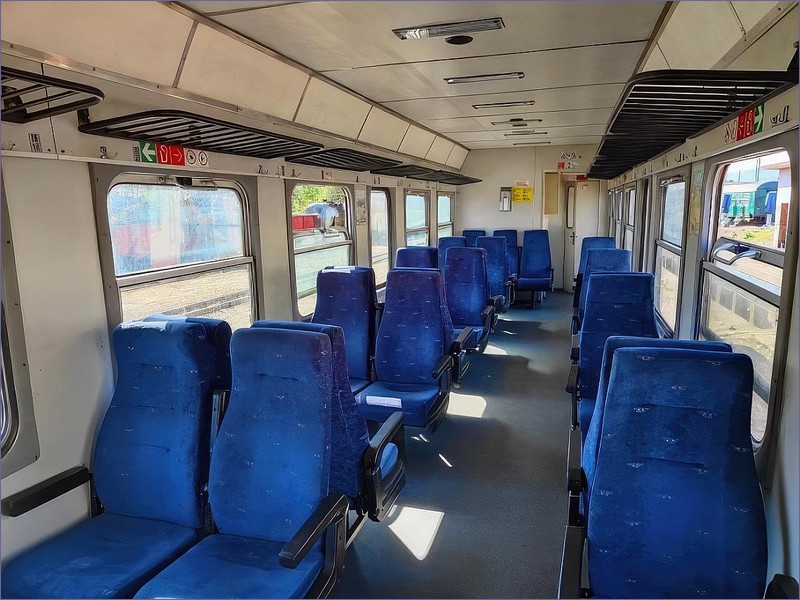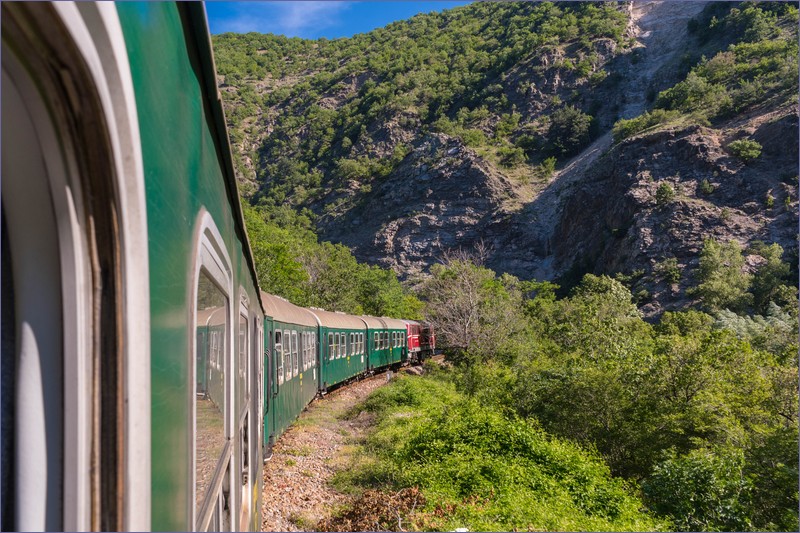Many travelers plan to fly to Sofia and back using low-cost airlines. While in Bulgaria, it’s worth dedicating one or two days to a narrow-gauge railway trip on the Septemvri – Dobrinishte line.
The Septemvri station, where passengers can transfer to the narrow-gauge train, is located on the main Sofia – Plovdiv railway line. However, it’s important to note that Sofia’s railway hub is currently under reconstruction, and even mainline trains may be canceled without prior notice.
Timetable
www.bdz.bg – Bulgarian Railways’ official website
About the Septemvri – Dobrinishte Narrow-Gauge Railway
This scenic narrow-gauge railway (760 mm) stretches for 125 km, with the journey between the starting and final stations taking 5 hours due to the mountainous terrain. However, passengers are rewarded with breathtaking landscapes and the opportunity to meet locals from Bulgarian villages, for whom this train is the only or best means of transportation to reach places like the market or doctor in Bansko.
The first section, 38.5 km from Septemvri to Velingrad, opened on August 1, 1926, while the final segment, 6.6 km from Bansko to Dobrinishte, was only completed on December 9, 1945. Plans to extend the line to Goce Delchev were never realized. Another branch line, Varvara to Pazardzhik (16 km), was operational until 2002.
What to Expect on the Journey
Travelers describe the Septemvri – Dobrinishte railway as a beautiful route, featuring hairpin turns, mountains, forests, waterfalls, and tunnels. The most scenic section is Varvara – Velingrad, where the train enters the Chepinska River canyon, traveling along an embankment beside the river before passing through multiple tunnels.
Beyond Cepina station, the train climbs uphill to Konstandovo, then descends slightly to Velingrad, an increasingly popular spa town. From there, the train climbs again towards Avramovo, which at 1,267 meters above sea level is the highest railway station in the Balkans.
Between Sveta Petka and Avramovo (10 km), there are 17 tunnels. The altitude difference between these two stations is 224 meters, yet the direct distance between them is only 3.5 km. The tunnels are narrow, which could pose evacuation challenges in case of a landslide or accident.
Train and Travel Conditions
The trains consist of a diesel locomotive and old carriages. Onboard, passengers will find:
✔️ Turkish-style toilets
✔️ No air conditioning
✔️ Significant temperature variations along the route
✔️ No onboard food service
Since the train passes through remote areas, it’s advisable to bring food and drinks, as there are no food stalls at intermediate stations.

Steam Train Rides
Occasionally, tourist trains operate on this route, featuring a steam locomotive and two vintage carriages. These trains usually run only on the Septemvri – Velingrad section. Interestingly, the steam locomotive 609.76, used for these special rides, was built in 1949 in Chrzanów, Poland.
Tickets & Train Schedule
– Regular Bulgarian Railways fare applies
– Four trains run daily
– A one-way ticket for the full route costs around 20 BGN (~10 EUR)
⚠️ Track maintenance and rail replacements sometimes result in bus replacements, so it’s best to check the Bulgarian Railways website before planning your trip.
Related articles
Train travel in Bulgaria – a comprehensive guide
